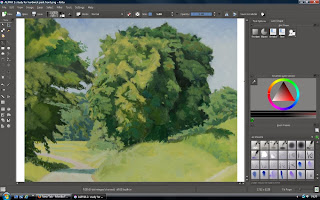'...To derive all from native power, to owe nothing to another, is the praise which men, who do not much think on what they are saying, bestow sometimes upon others, and sometimes on themselves; and their imaginary dignity is naturally heightened by a supercilious censure of the low, the barren, the groveling, the servile imitator. It would be no wonder if a student, frightened by these terrific and disgraceful epithets, with which the poor imitators are so often loaded, should let fall his pencil in mere despair; (conscious as he must be, how much he has been indebted to the labour of others, how little, how very little of his art was born with him;) and consider it as hopeless, to set about acquiring by the imitation of any human master, what he is taught to suppose is matter of inspiration from heaven....
...For my own part, I confess, I am not only very much disposed to maintain the absolute necessity of imitation in the first stages of art; but am of opinion, that the study of other masters, which I here call imitation, may be extended throughout our whole lives, without any danger of the inconvenience with which it is charged, of enfeebling the mind, or preventing us from giving that original air which every work undoubtedly ought always to have.
...From the remains of the works of the ancients the modern arts were revived, and it is by their means that they must be restored a second time. However it may mortify our vanity, we must be forced to allow them our masters; and we may venture to prophesy, that when they shall cease to be studied, arts will no longer flourish, and we shall again relapse into barbarism.
...Thus I have ventured to give my opinion of what appears to me the true and only method by which an artist makes himself master of his profession; which I hold ought to be one continued course of imitation, that is not to cease but with his life.'
The Discourses of Sir Joshua Reynolds. Discourse VI.





.png)
.png)
.png)
.png)
.png)




















